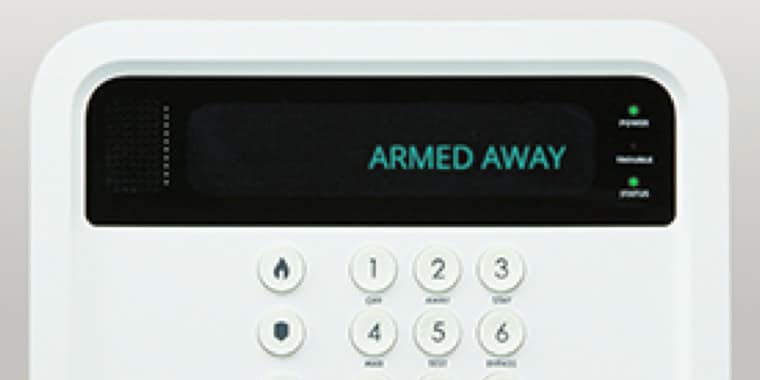Back to School Safety Tips
It’s that time of year again when parents and children across the country are preparing to go back to school. As part of our commitment to overall campus safety, ADT would like to help you with your preparations by offering these simple safety tips.
School Zone Driving Safety Tips
- Be on the lookout for school zone signals and ALWAYS obey the speed limits.
- When entering a school zone, be sure to slow down and obey all traffic laws.
- Always stop for school busses that are loading or unloading children.
- Watch out for school crossing guards and obey their signals.
- Be aware of and watch out for children near schools, bus stops, sidewalks, in the streets, in school parking lots, etc.
- Never pass other vehicles while driving in a school zone.
- Never change lanes while driving in a school zone.
- Never make U-Turns while driving in a school zone.
- Never text while driving in a school zone.
- Avoid using a cell phone, unless it is completely hands-free, while driving in a school zone.
- Unless licensed to do so, never use handicap or emergency vehicle lanes or spaces to drop off or pick up children at school.
Riding Your Bike to School
- Check with the school to make sure your child is allowed to ride their bicycle to school. Some schools do not allow students to ride bicycles to school until they reach a specific grade.
- Make sure your child always wears a bicycle helmet! Failure to wear one could result in a traffic citation. Furthermore, in the event of an accident, helmets reduce the risk of head injury by as much as 85 percent.
- Obey the rules of the road; the rules are the same for all vehicles, including bicycles.
- Always stay on the right-hand side of the road and ride in the same direction as traffic.
- Be sure your child know and uses all of the appropriate hand signals.
- Choose the safest route between home and school and practice it with children until they can demonstrate traffic safety awareness.
- If possible, try to ride with someone else. There is safety in numbers.
Playground Safety
- MA supervisor must always be present when children are at the school’s playground. Make sure your school has someone who monitors the playgrounds at all times.
- Playground equipment should be surrounded by shock-absorbing material that is at least nine inches thick.
- Protective surfaces should extend six feet in all directions around the playground equipment. For swings, it should extend twice the height of the set.
- Due to strangulation hazards, do not attach ropes, jump ropes, clotheslines, pet leashes or cords of any kind to playground equipment.
- Be watchful of sharp edges or points on equipment.
- Alert the school if you notice anything strange about the playground equipment at your child’s school.
- Spaces that can trap children, such as openings between ladder rungs, should measure less than three and a half inches or more than nine inches.
- All elevated surfaces, such as ramps, should have guardrails to prevent falls.
Walking to School
- Leave early enough to arrive at school at least 10 minutes prior to the start of school.
- Use the same route every day and never use shortcuts.
- Go straight home after school. Do not go anywhere else without permission.
- Always use public sidewalks and streets when walking to school.
- Demonstrate traffic safety awareness and pick the safest route between your home and the school and practice walking it with your children.
- Try and walk to school with other students. There is strength in numbers.
- Teach your children to recognize and obey traffic signals, signs, and pavement markings.
- Only cross streets at designated crosswalks, street corners and traffic controlled intersections.
- Always look both ways before crossing the street and never enter streets from between obstacles like parked cars, shrubbery, signs, etc.
- Always walk and never run across intersections.
- Avoid talking to strangers. Teach your children to get distance between themselves and anyone who tries to approach or make contact with them.
- If a stranger does approach your child, make sure they know to immediately report the incident to you or a teacher.
- Teach your children to never get into a vehicle with anyone, even if they know them, without your permission.
Clothing and School Supplies
- To prevent injury, backpacks should have wide straps, padding in the back and shoulders, and should not weigh more than 10 to 15 percent of a child’s body weight.
- When placing items in a backpack, place the heavier items in first. The closer the heavier items are to a child’s back, the less strain it will cause.
- Children should use both backpack straps and all compartments for even distribution of weight.
- Remove drawstrings from jackets, sweatshirts, and hooded shirts to reduce the risk of strangulation injuries.
- Art supplies in the classroom should always be child safe and non-toxic. Be sure they have “CONFORMS TO ASTM D-4236” on their packaging.
- Make sure your child’s school is up-to-date on the latest recalled children’s products and toys.
School Bus Safety
- Make habit of arriving at the bus stop at least five minutes before the scheduled arrival of the bus.
- Make sure your child stays out of the street and avoids excessive horseplay while waiting for the school bus.
- Be sure the bus comes to a complete stop before getting on or off.
- When riding the bus, make sure your child understands they must remain seated and keep their head and arms inside the bus at all times.
- Do not shout or distract the driver.
- Do not walk in the driver’s “blind spot” — this is the area from the front of the bus to about 10 feet in front of the bus.





